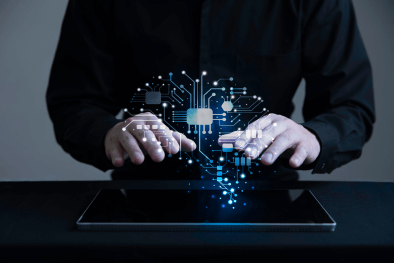Datafication - The Digital Revolution Shaping Our World
In today’s digital age, data is everywhere. Almost every aspect of our lives generates digital footprints from the websites we visit to the products we buy. This abundance of data has given rise to a transformative phenomenon known as datafication.
Picture this: every click of your mouse, every tap of your smartphone, every step you take – all transformed into digital breadcrumbs, waiting to be analyzed and decoded. Welcome to the world of datafication, where our lives are translated into streams of data, ripe for exploration and exploitation.
What is Datafication?
Datafication refers to the process of converting various aspects of human existence and activities into digital data. It involves collecting, storing, and analyzing vast amounts of data, transforming traditional analog processes into digital ones. This data can encompass anything from personal behaviors and social interactions to business transactions and environmental patterns.
Datafication is a technology movement that uses robotics, artificial intelligence, machine learning, and many other developing stacks to turn the features (behaviors, processes, and activities) of businesses, consumers, and users into data. It is possible to track this data. processed, tracked, and evaluated to improve the goods and services a company offers to its clients. The combined tools, methods, and procedures that turn an organization into a data-driven enterprise are collectively referred to as datafication.
The Power of Data

The significance of datafication lies in its ability to unlock valuable insights and drive informed decision-making. By capturing and analyzing data, businesses and organizations can gain a deeper understanding of customer preferences, market trends, and operational inefficiencies. This enables them to optimize processes, improve products and services, and enhance overall performance.
Think about it: every time you scroll through social media, order takeout online, or even just stroll around with your smartphone in hand, you’re leaving behind digital footprints. These tiny breadcrumbs might seem insignificant on their own, but when you gather them all up, they paint a pretty clear picture of who you are and what you like.
Applications of Datafication
Datafication has numerous applications across various industries and sectors. In healthcare, for example, it enables the monitoring of patient health through wearable devices and electronic medical records, leading to more personalized treatment plans and preventive care strategies. In finance, datafication facilitates fraud detection, risk assessment, and algorithmic trading, helping organizations mitigate financial risks and maximize returns.
Our tastes and daily interactions are influence by social media platforms that track users and collect data to present material and adverts that are relevant to their behaviors and interests.
Financial organizations use datafication to assess a customer’s creditworthiness and associated risk by figuring out whether or not they can be counted on to pay back a loan.
Human resource specialists can discern abilities from candidates’ behaviors, which aids in predicting their level of talent.
The list is endless. As you can see, Datafication is advantageous to all parties involved and has the potential to drastically alter how we do business and sustainably grow our enterprises.
Finding Patterns in the Chaos
Now, here’s where it gets interesting. Behind all that data lies hidden patterns and clues waiting to be discovered. It’s like solving a puzzle – the more pieces you have, the clearer the picture becomes. Businesses use this information to figure out what you might want to buy next or which ads are most likely to catch your eye. It’s a bit like having a personal shopper who knows your tastes better than you do!
Enter the Algorithms
Now, let’s talk about the real stars of the show: algorithms. These are the brainiacs behind the scenes, crunching numbers and finding patterns faster than you can say “big data.” Think of them as digital detectives, sifting through mountains of data to uncover hidden insights.
But here’s where things get interesting. With machine learning, algorithms can learn and improve over time. It’s like teaching a computer to think for itself – scary, right? But also incredibly powerful. This means algorithms can make predictions, identify anomalies, and even adapt to new situations without human intervention.
The Power of Analytics
However raw data alone is of little use without the analytical tools to extract meaning from it. Enter the world of data analytics – a rich tapestry of techniques and methodologies designed to uncover insights and patterns hidden within the data. From simple descriptive statistics to advanced machine learning algorithms, the arsenal of analytical tools at our disposal is vast and varied.
The Dark Side of Data: Privacy, Security, and Ethics
Of course, no discussion of datafication would be complete without addressing the elephant in the room: privacy and security. As we collect more and more data, we run the risk of overstepping boundaries and violating privacy rights. It’s a delicate balance between innovation and ethics, and one that requires careful consideration.
With great power comes great responsibility. As we harness the power of datafication, we must be vigilant guardians of privacy, security, and ethics. Data breaches, algorithmic biases, and ethical dilemmas abound, requiring a careful balancing act between innovation and accountability.

The Future Frontier
Looking ahead, the future of datafication is boundless. Advances in artificial intelligence, quantum computing, and edge computing promise to push the boundaries of what’s possible even further. From autonomous vehicles to smart cities, the potential applications of datafication are limited only by our imagination.
So, the next time you tweet, swipe, or click, just remember: you’re not just sending a message or buying something online. You’re adding another piece to the ever-expanding puzzle of datafication, shaping the future in ways we’re only beginning to imagine.
